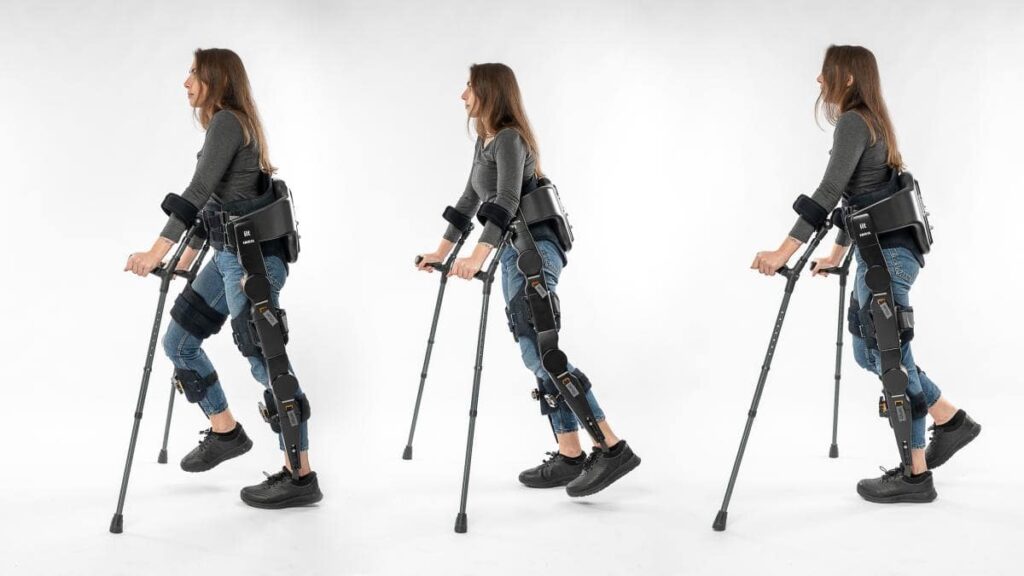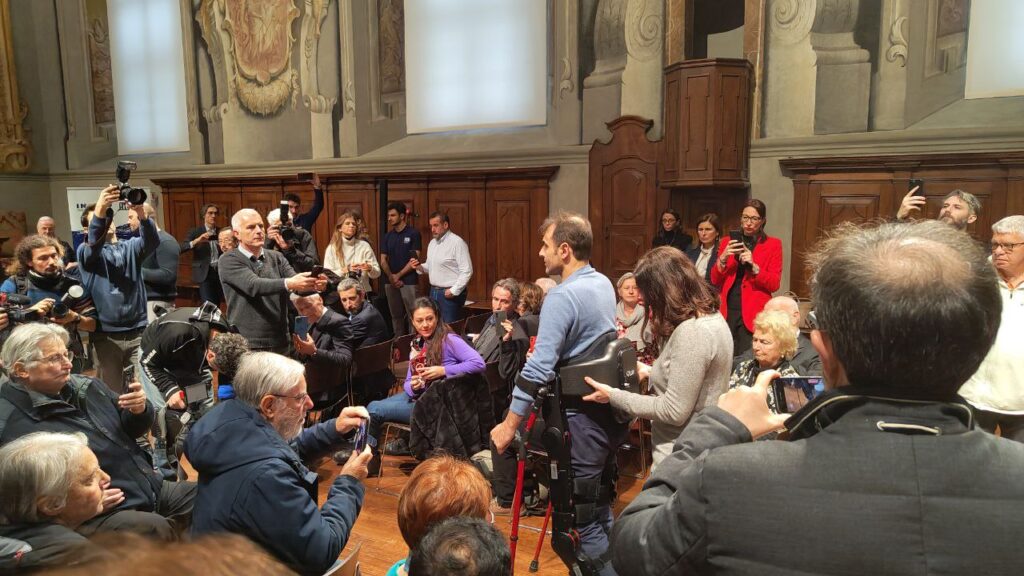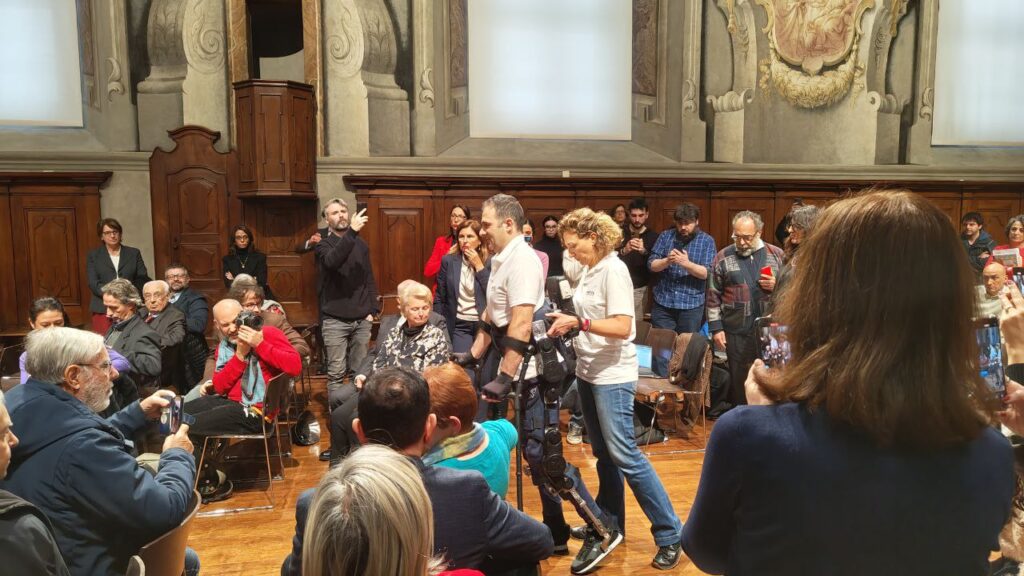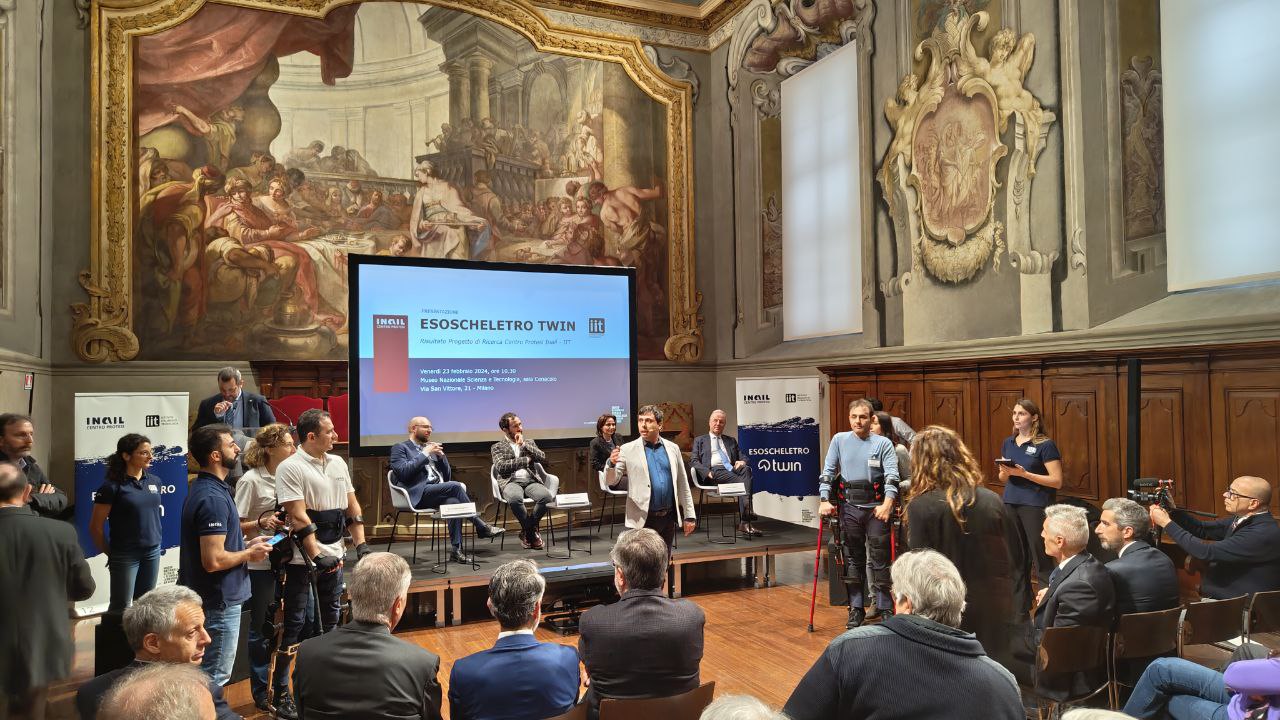In recent months, we have often heard technology spoken of almost as an “adversary” for man. For some, artificial intelligence evokes images of lost jobs or even apocalypses. But technology can be an excellent tool, when it puts the person at the centre. And today, at the Museum of Science and Technology in Milan, we saw it during the presentation of theTwin exoskeletondeveloped by INAIL e IITwhich helped two men who had lost the use of their legs following accidents at work to walk again.
The Twin Exoskeleton makes those who could no longer walk
During the presentation, the team that worked on Twin explains that the first experiences of active exoskeletons arrived in 2010, with technicians and doctors evaluating various advantages from a physical point of view, but also various technological problems. INAILtherefore, decided to start developing with IIT its own project, putting patients and their needs and expectations at the centre.
In about ten years of medical and engineering research, continuing to ask for feedback from the patients we saw walking today (Alex Santucci and Davide Costi), they produced two prototypes: “Twin 1” e “Twin 2”, also developed taking into account ergonomics and design. At the same time, this work led to the birth of TwinMED, which collects and analyzes data from prostheses. A scientific process that led to the result presented today.
Advanced engineering and patient determination
The researchers, starting from the dialogue with the patients, understood that autonomy, transport and management, and comfort, are the essential points. Thus they arrived at Twin 2, which weighs one twenty kilos and can be worn in about three and a half minutes. The engine module of the machine, which can be quickly disassembled and assembled, allows you to walk about two kilometers per hour. They are sensitive motors, which understand the user’s movement intentions from how he moves his back and simplify the movement.
 Credits: IIT
Credits: IIT
Everything can be dismantled so that in the future you can store the exoskeleton in a suitcase when travelling. In this way, management becomes more autonomous – e.g improves patients’ lives. This is also true for the ergonomics of bands abdominal muscles, which can inflate to distribute pressure and provide the right support based on the area. The femoral bands and the tibial support it can be customized to fit the height and measurements of the vast majority of patients.

The device supports three levels of assistance. There Walk Mode It totally supports walking, for those who are unable to move their legs otherwise. The mode Retrain helps those with limited mobility, while TwinCare gives a “gentle push” to simplify patient movements. All manageable from a tablet, with an app that seems simple to use.
Benefits that go beyond mobility
The doctors who followed the project underline that the benefits for patients are not only linked to the return to mobility. Returning to walking reduces anxiety and depression in patients, it becomes easier to manage pain and intestinal functions, sores are reduced and blood pressure is lowered. The psycho-emotional intensity of this type of project improves the body’s immune response: patients feel better on a psychological level, and therefore their biological functions also improve.

“I started experimenting with Twin during my rehabilitation journey and it immediately proved to be one tool capable of supporting me both physically and psychologically. First of all, verticalization allows you to get to the level of someone who is standing and then assisted walking allows you the freedom to change position, has benefits for the circulatory system and the musculoskeletal system and constitutes an excellent workout in itself” explains Alex Santucci, one of the patients who tried the exoskeleton.
Patients, when asked how they found testing this Twin exoskeleton, explain that there is a need to find confidence in the machine, something complicated at first. But with the right will and the right exercise, it becomes possible.”take back something that was taken from you”.
Stay updated by following us on Google News!
Follow!















Leave a Reply
View Comments